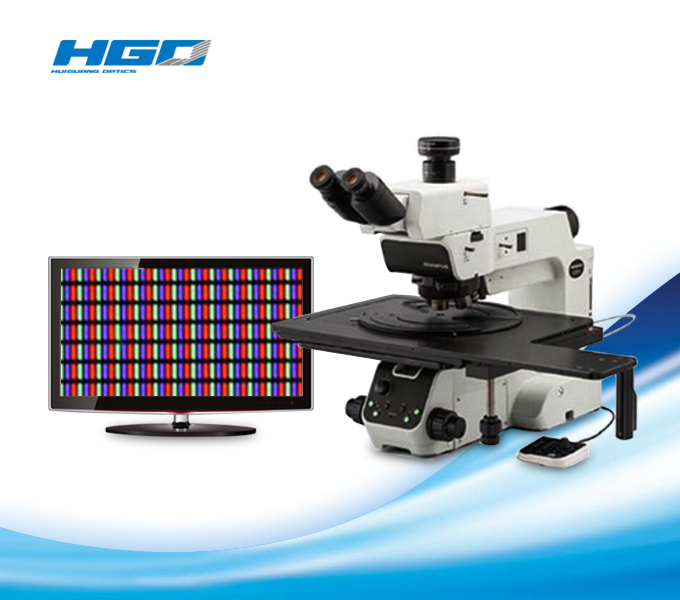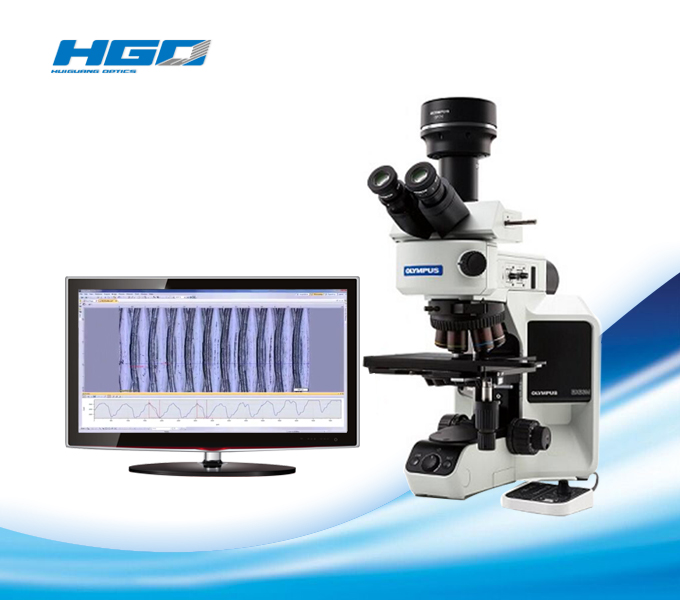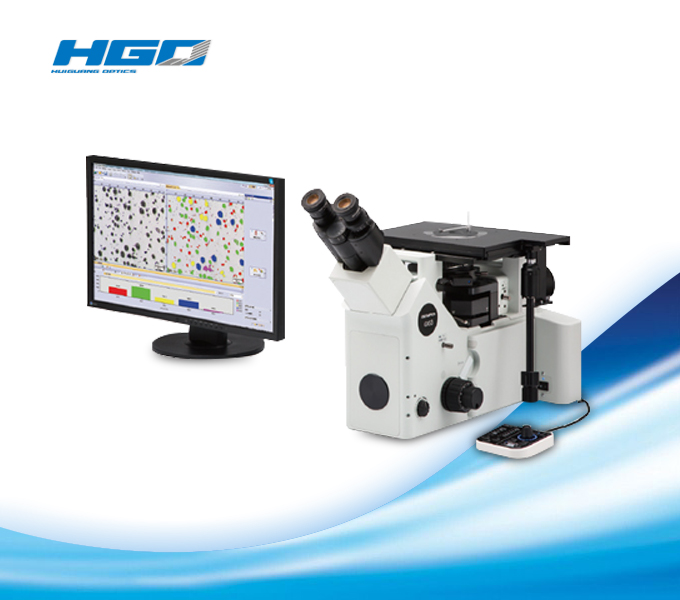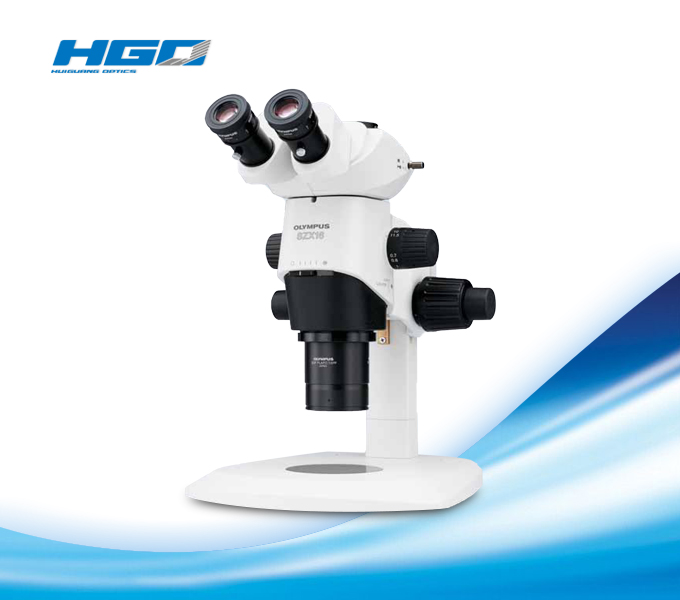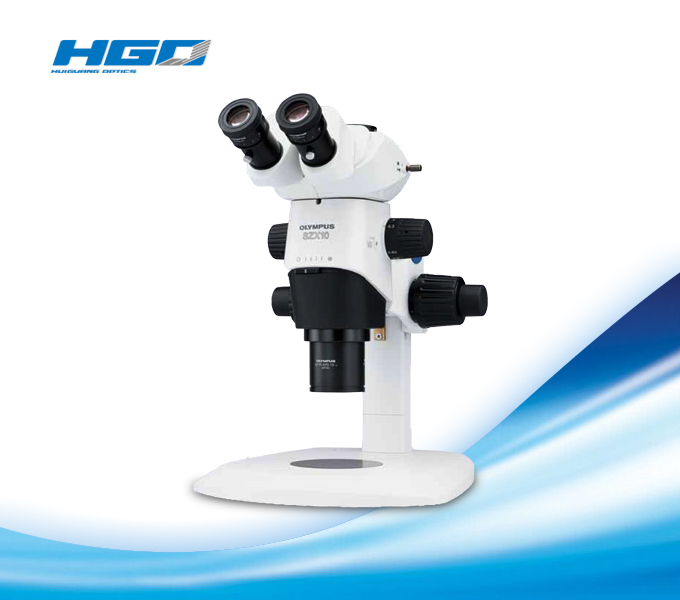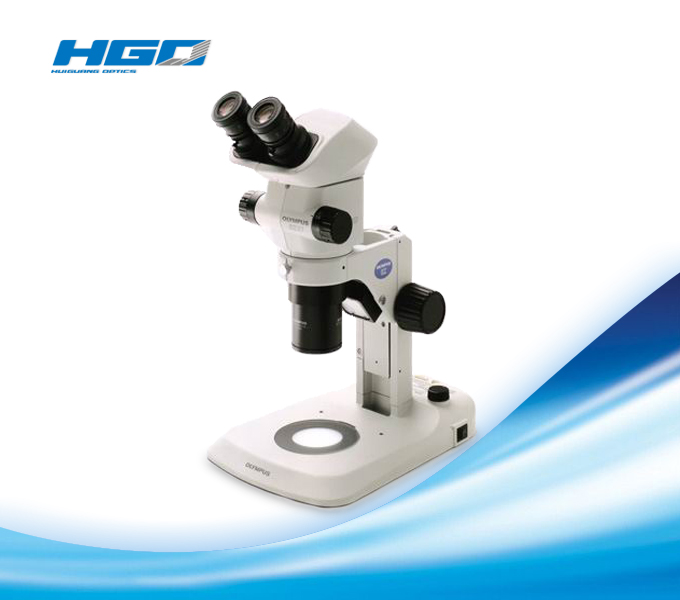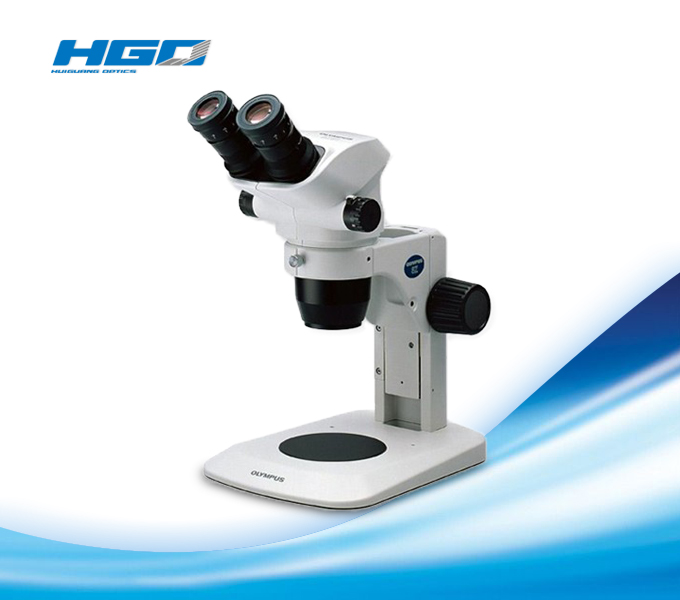Introduction TO MX63 and MX63L Microscope Systems
Streamline Your Large Sample InspectionWorkflow
The MX63 and MX63L microscope systems areoptimized for high-quality inspections of wafers as large as 300 mm, flat paneldisplays, circuit boards, and other large samples. Their modular design enablesyou to choose the components you need to tailor the system to your application.
These ergonomic and user-friendlymicroscopes help increase throughput while keeping inspectors comfortable whilethey do their work. Combined with OLYMPUS Stream image analysis software, yourentire workflow, from observation to report creation, can be simplified.

1、Observation andAnalysis Tools
● Leading-Edge Analysis Tools
The MX63 series’ versatile observationcapabilities provide clear, sharp images so users can reliably detect defectsin their samples. New illumination techniques and image acquisition optionswithin OLYMPUS Stream image analysis software give users more choices forevaluating their samples and documenting their findings.
● The Invisible Becomes Visible: MIXObservation and acquisition
MIX observation technology produces uniqueobservation images by combining darkfield with another observation method, suchas brightfield, fluorescence, or polarization. MIX observation enables users toview defects that are difficult to see with conventional microscopes. Thecircular LED illuminator used for darkfield observation has a directionaldarkfield function where only one quadrant is illuminated at a given time. Thisreduces a sample’s halation and is useful for visualizing a sample’s surfacetexture.
Structure on semiconductor wafer
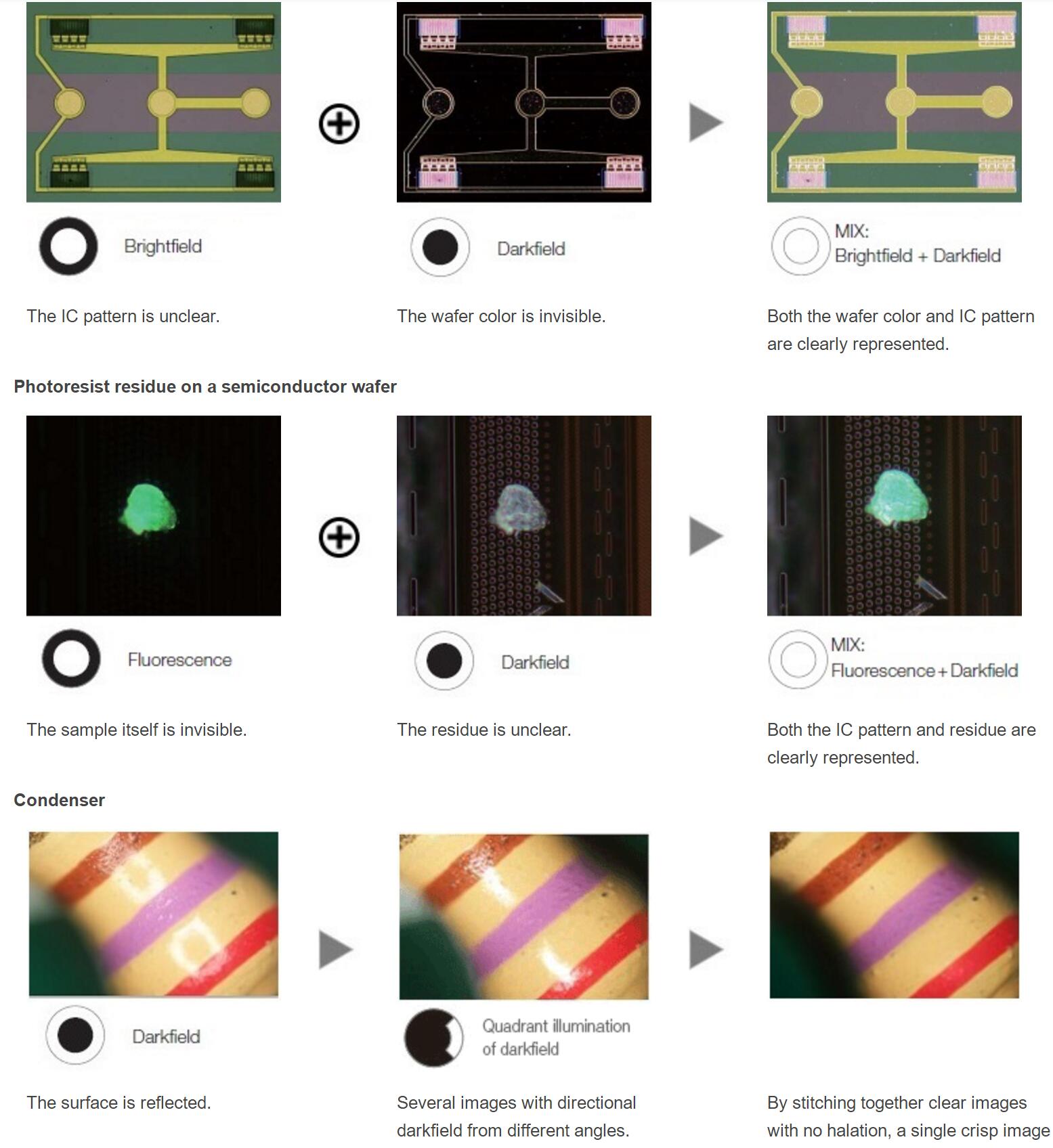
● Easily Create Panoramic Images: InstantMIA
With multiple image alignment (MIA), userscan stitch images together quickly and easily simply by moving the KY knobs onthe manual stage—a motorized stage is not necessary. OLYMPUS Stream softwareuses pattern recognition to generate a panoramic image, giving users a widerfield of view.

Instant MIA image of a coin
● Create all-in-focus images: EFI
The Extended Focus Imaging (EFI) functionwithin OLYMPUS Stream captures images of samples whose height extends beyondthe depth of focus of the objective and stacks them together to create oneimage that is all in focus. EFI can be executed with either a manual ormotorized Z-axis and creates a height map for easy structure visualization. Itis also possible to construct an EFI image while offline within Stream Desktop.

Stud bump on an IC chip
● Capture Both Bright and Dark Areas UsingHDR
Using advanced image processing, highdynamic range (HDR) adjusts for differences in brightness within an image toreduce glare. HDR improves the visual quality of digital images thereby helpingto generate professional-looking reports.
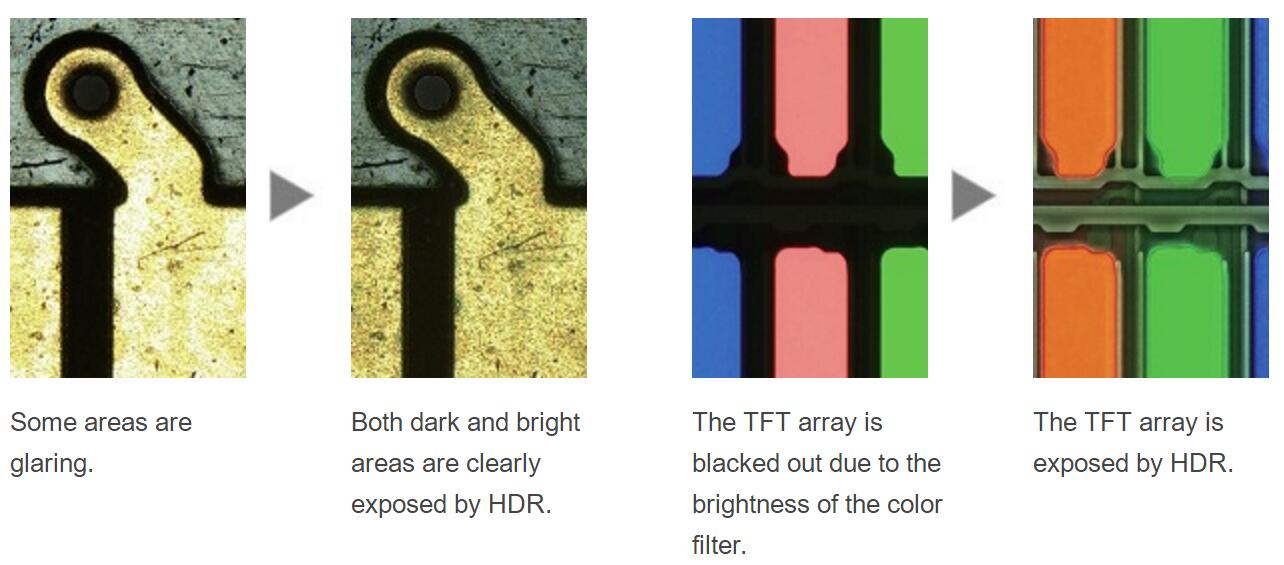
● From Basic Measurement to AdvancedAnalysis
Measurement is essential to quality andprocess control and inspection. With this in mind, even the entry-level OLYMPUSStream software package includes a full menu of interactive measurementfunctions, with all measurement results saved with image files for furtherdocumentation. In addition, the OLYMPUS Stream Materials Solution offers anintuitive, workflow-oriented interface for complex image analysis. At the clickof a button, image analysis tasks can be executed quickly and precisely. With asignificant reduction in processing time for repeated tasks, operators canconcentrate on the inspection at hand.

● Efficient Report Creation
Creating a report can often take longerthan capturing the image and taking the measurements. OLYMPUS Stream softwareprovides intuitive report creation to repeatedly produce smart andsophisticated reports based on pre-defined templates. Editing is simple andreports can be exported to Microsoft Word or PowerPoint software. In addition,OLYMPUS Stream software’s reporting function enables digital zooming andmagnification on acquired images. Report files are a reasonable size for easierdata exchange by email.

● Stand-Alone Camera Option
Using a DP22 or DP27 microscope camera, theMX63 series becomes an advanced stand-alone system. The cameras can becontrolled via a compact box that requires only minimal space, helping usersmaximize their laboratory space while still capturing clear images and makingbasic measurements.

Camera control box
● Advanced Designed to Support CleanroomConformity
The MX63 series is designed to work in acleanroom and has features that help minimize the risk of contaminating ordamaging samples. The system has an ergonomic design that helps keep userscomfortable, even during prolonged use. The MX63 series complies withinternational specifications and standards, including SEMI S2/S8, CE, and UL.
● Optional Wafer Loader Integration― AL120 System*
An optional wafer loader can be attached toMX63 series to safely transfer both silicon and compound semiconductor wafers froma cassette to the microscope stage without using tweezers or wands. Renownedperformance and reliability enable safe, efficient front and back macroinspections while the loader helps improve productivity in the laboratory.

MX63 combined with the AL120 wafer loader(200 mm version)
* AL120 is not available in EMEA.
● Fast, Clean Inspections
The MX63 series delivers contamination-freewafer inspections. All motorized components are housed in a shielded structure,and antistatic processing is applied to the microscope frame, tubes, breathshield, and other parts. The rotation speed of the motorized nosepieces isfaster and safer than manual nosepieces, decreasing the time betweeninspections while keeping the operator's hands below the wafer, reducing potentialcontamination.


Antistatic breath shield Motorized nosepiece
● System Design Achieving EfficientObservations
The XY stage is capable of both coarse andfine stage movements thanks to the combination of a built-in clutch and the XYknobs. The stage helps make observations efficient, even for large samples,such as 300 mm wafers.
The tilting observation tube’s extensive range enables operators to sit at themicroscope in a comfortable posture.

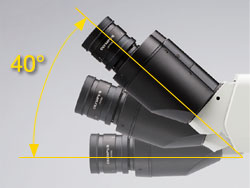
Stage handle with built-in clutch The tilting observation tube providingcomfortable posture
● Accepts All Wafer Sizes
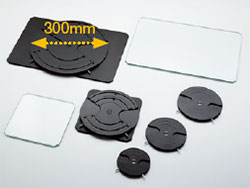
Wafer holders and glass plates
The system works with various types of150–200 mm and 200–300 mm wafer holders and glass plates. Should the size ofthe wafters change on the production line, the microscope’s frame can be modifiedat minimal cost. With the MX63 series, different stages can be used toaccommodate 75 mm, 100 mm, 125 mm, and 150 mm wafers on the inspection line.
2、Intuitive MicroscopeControls: Comfortable and Easy to Use
The microscope’s settings are simple to operate,making it easier for users to make adjustments and reproduce system settings.
Find the Focus Quickly: Focus Aid
Inserting a focus aid in the optical pathallows easy and accurate focusing on low-contrast samples, such as bare wafers.
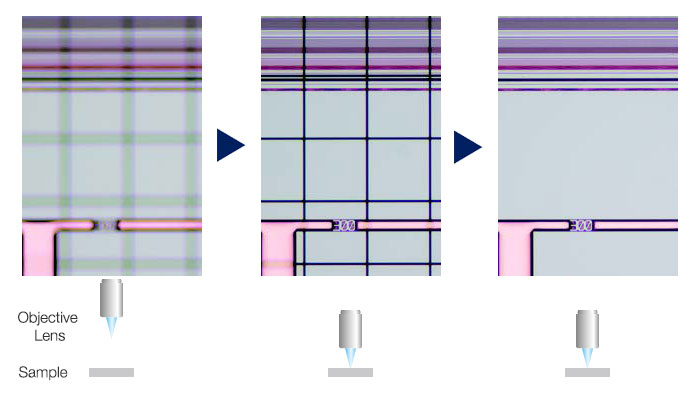
Left image: The grid indicates the image isout of focus. / Middle images: The grid assists focusing. / Right image:An in-focus image can be easily obtained.
Easily Restore Microscope Settings: CodedHardware
Coded functions integrate the MX63 series’hardware settings with OLYMPUS Stream image analysis software. The observationmethod, illumination intensity, and magnification are automatically recorded bythe software and stored with the associated images. Since the settings caneasily be reproduced, any operator can conduct the same quality inspectionswith minimal training.
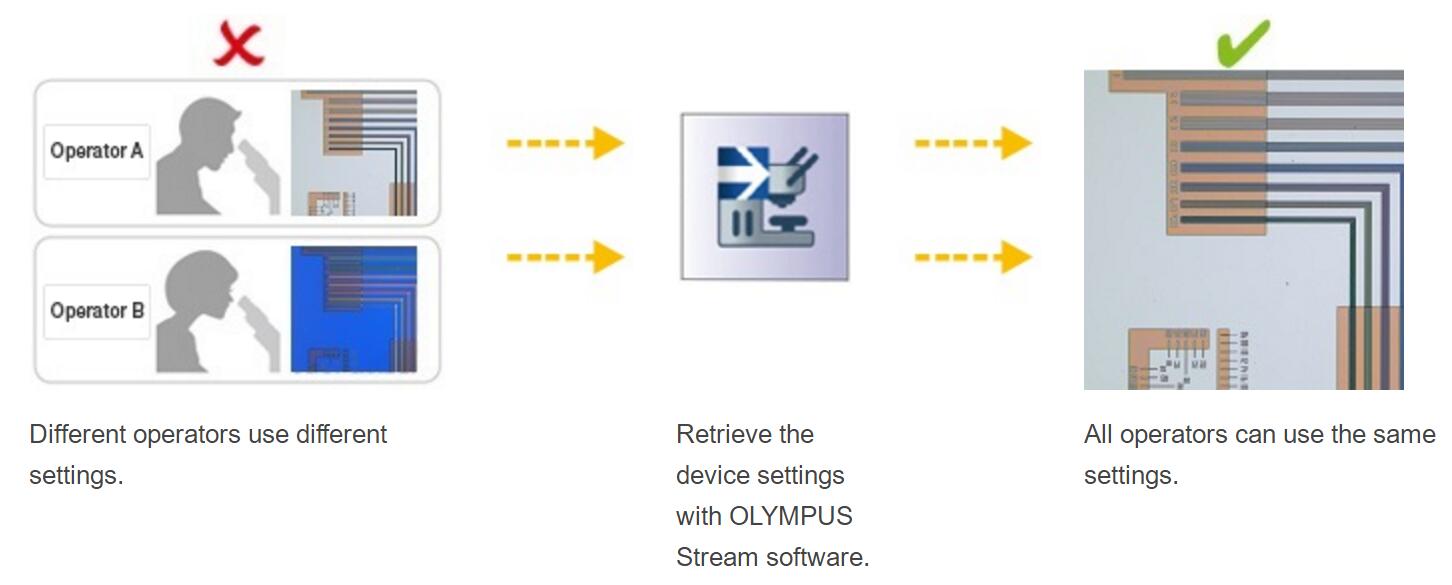
Different operators use different settings. Retrieve the device settings with OLYMPUS Stream software. All operators can use the same settings.
Ergonomic Controls for Quicker, MoreComfortable Operation
The controls for changing the objective andadjusting the aperture stop are positioned low and in the front of themicroscope so users don’t have to let go of the focusing knobs or move theirhead away from the eyepieces during use.
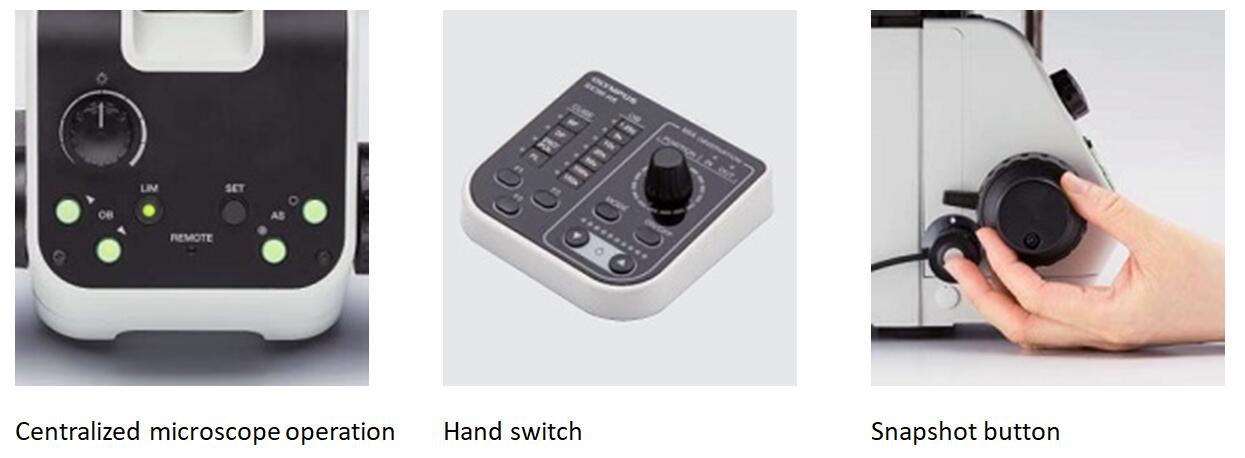
Faster Observations via the Light IntensityManager and Automatic Aperture Control
In normal microscopes, users need to adjustthe light intensity and aperture for every observation. The MX63 series enablesusers to set up the light intensity and aperture conditions for differentmagnifications and observation methods. These settings can be easily recalled,helping users save time and maintain optimal image quality.
Light Intensity Manger

Automatic Aperture Control

Maximum aperture: Higher resolution Minimum aperture: Higher contrast andlarger depth of field

3、Image Quality
● Exquisite Optics and Digital Imaging for Quality Inspections
Olympus history of developing high-qualityoptics and advanced digital imaging capability have resulted in a record ofproven optical quality and microscopes that offer excellent measurementaccuracy.
● Superior Optical Performance: Wave FrontAberration Control
The optical performance of objective lensesdirectly impacts the quality of the observation images and analysis results.Olympus UIS2 high-magnification objectives are designed to minimize wavefrontaberrations, delivering reliable optical performance.
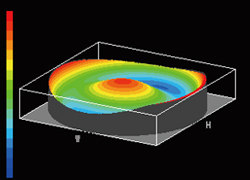
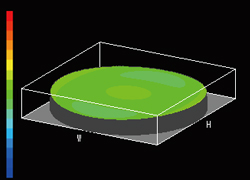
Bad wave front Good wave front (UIS2 objective)
● Consistent Color Temperature: High-IntensityWhite LED Illumination
The MX63 series utilizes a high-intensitywhite LED light source for reflected and transmitted illumination. The LEDmaintains a consistent color temperature regardless of intensity for reliableimage quality and color reproduction. The LED system provides efficient,long-life illumination that is ideal for materials science applications

Color varies with light intensity.

Color is consistent with lightintensity and clearer than halogen.
* All images captured using auto exposure
● Precise Measurements: Auto Calibration
Similar to digital microscopes, automaticcalibration is available when using OLYMPUS Stream software. Auto calibrationhelps eliminate human variability in the calibration process, leading to morereliable measurements. Auto calibration uses an algorithm that automaticallycalculates the correct calibration from an average of multiple measurementpoints. This minimizes variance introduced by different operators and maintainsconsistent accuracy, improving reliability for regular verification.
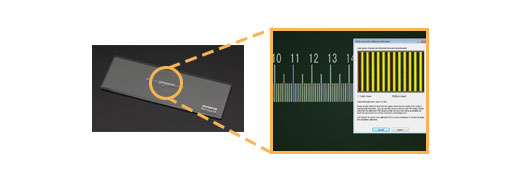
● Entirely Clear Image : Image ShadingCorrection
OLYMPUS Stream software features shadingcorrection to accommodate for shading around the corners of an image. When usedwith intensity threshold settings, shading correction provides a more preciseanalysis.
Semiconductor wafer (Binarized image)

Right image: Shading correctionproduces even illumination across the field of view.
4、Modularity
● Fully Customizable
The MX63 series is designed to enable thecustomer to choose a variety of optical components to suit individualinspections and application needs. The system can utilize all observationmethods. Users can also select from a variety of OLYMPUS Stream image analysispackages to suit individual image acquisition and analysis needs.
● Two Systems Accommodate Diverse SampleSizes
The MX63 system can accommodate wafers upto 200 mm while the MX63L system can handle wafers up to 300 mm with the samesmall footprint as the MX63 system. The modular design makes it easy tocustomize the microscope for your specific requirements
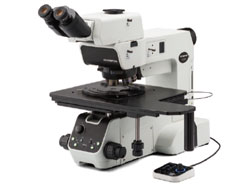
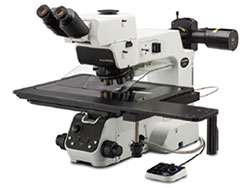
MX63 MX63L
● IR compatibility
Infrared observation can be conducted withthe IR objective lenses, which enable the operators to nondestructively inspectthe inside of IC chips packed and mounted on a PCB, utilizing thecharacteristics of silicon that transmit infrared light. 5X to 100X IRobjectives are available with chromatic aberration correction from visiblelight wavelengths through the near infrared.
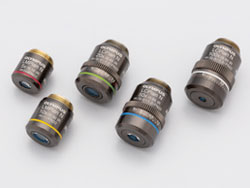
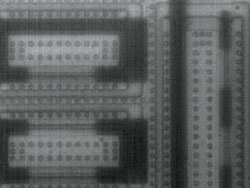

IR objective lenses Original image With chromatic aberration
5、Applications
The MX63 series is used in a range ofreflected light microscopy applications. These applications are an example ofsome of the ways the system is used for industrial inspections.
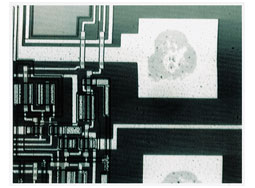
IR image of an electrode section
Infrared (IR) is used to look for defectsinside IC chips and other devices made with silicon on glass.

Film (Left: Brightfield / Right: Polarized light)
Polarized light is used to reveal amaterial’s texture and the condition of crystals. It is suitable forinspections of wafer and LCD structures.

A hard disk
(Left: Brightfield / Right: DIC)
Differential interference contrast (DIC) isused to help view samples with minute height differences. It is ideal forinspections of samples having very minute height differences such as magneticheads, hard-disk media, and polished wafers.

IC pattern on a semiconductor wafer
(Left: Darkfield / Right: MIX (Brightfield + Darkfield))
Darkfield is used for detecting minutescratches or flaws on a sample or inspecting samples with mirrored surfaces,such as wafers. MIX illumination enables users to view both patterns andcolors.

Photoresist residue on a semiconductorwafer
(Left: Fluorescence / Right: MIX (Fluorescence + Darkfield))
Fluorescence is used for samples that emitlight when illuminated with a specially designed filter cube. This is used todetect contamination and photoresist residue. MIX illumination enables theobservation of both the photoresist residue and IC pattern.

An LCD color filter
(Left: Transmitted Light / Right: MIX (Transmitted Light + Brightfield))
This observation technique is suitable fortransparent samples such as LCDs, plastics, and glass materials. MIXillumination enables the observation of both the filter color and circuitpattern.
Technical Specifications
MX63 | MX63L | ||
Optical system | UIS2 optical system (infinity-corrected system) | ||
Microscope frame | Reflected light illumination | White LED(with Light Intensity Manager) 12 V 100 W halogen lamp, 100W mercury lamp | |
Transmitted light illumination | Transmitted light illumination unit: MX-TILLA or MX-TILLB is required. | ||
Focus | Stroke: 32 mm | ||
Maximum load weight (including stage and holder) | 8 kg | 15 kg | |
Observation tube | Wide-field (FN 22 mm) | Erect and trinocular: U-ETR4 | |
Super-wide-field (FN 26.5 mm) | Erect, tilting and trinocular: MX-SWETTR (optical path switchover 100% (eyepiece) : 0 (camera) or 0 : 100%) | ||
Motorized nosepiece | Brightfield Brightfield and darkfield | ||
Stage (X × Y) | Coaxial right handle with built-in clutch drive: MX-SIC8R Coaxial right handle with built-in clutch drive: MX-SIC6R2 | Coaxial right handle with built-in clutch drive: MX-SIC1412R2 | |
Weight | Approx. 35.6kg(Microscope frame 26kg) | Approx. 44kg(Microscope frame 28.5kg) | |
